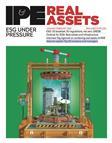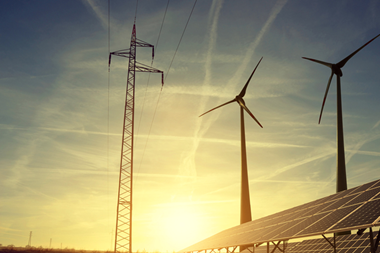AMP Capital has raised a record US$6.2bn (€5.5bn) for its fourth infrastructure debt strategy, which includes final close of the AMP Capital Infrastructure Debt Fund IV (IDF IV), co-investment rights and separate mandates.
The Australian fund manager said the IDF IV fund, which reached a hard cap of US$4.0bn, surpassed the US$3.5bn target.
Apart from the fund itself, AMP Capital raised an additional US$1.0bn in co-investment rights and a further US$1.2bn in separate mandates from investors.
The predecessor IDF III fund raised US$2.5bn equity and an additional US$1.6bn in co-investment and other commitments in 2017.
AMP Capital’s head of infrastructure debt, Andrew Jones, said more than 30 new investors were among 86 institutions which had committed to the manager’s latest debt strategy.
Of these, Korean investors were notable in that they contributed a total of US$1.2bn to the capital raising.
“Most of these are Korean insurance companies,” Jones told IPE Real Assets. “They are looking for returns in the range of 10%. This is what we have been able to deliver over a long period of time.”
Jones said some Korean institutions first invested with the firm in its AMP Capital Infrastructure Debt Fund II.
Other new investors came from Japan, Canada and Germany.
The latest entity is AMP Capital’s largest closed-end fund and is believed to be the largest fundraising in the world for an infrastructure mezzanine debt strategy.
Jones said the fund had already started to deploy more than US$2bn of the capital raised, into 10 assets which included a district heating business in Europe and a data centre in North America.
“We are making good progress in deploying the fund, and if the momentum continues, the capital will be fully deployed by the second half of next year. And (by then) we would need to be seeking fresh capital,” he said.
“We invest in developed markets, and mainly in Europe and North America.”
Jones said strong demand was emerging from North America. Europe was a more mature market.
He said the market for senior debt was competitive in a low-interest-rate environment.
But there was less competition for infrastructure mezzanine debt, which is the target market for the fund
Jones told IPE Real Assets his preference was to invest in brownfield assets with a focus on energy, utilities, digital technology and transport infrastructure, where there was a pipeline of investment opportunities.
He said the only greenfield infrastructure the fund would lend to would be in digital, wind and solar assets.









